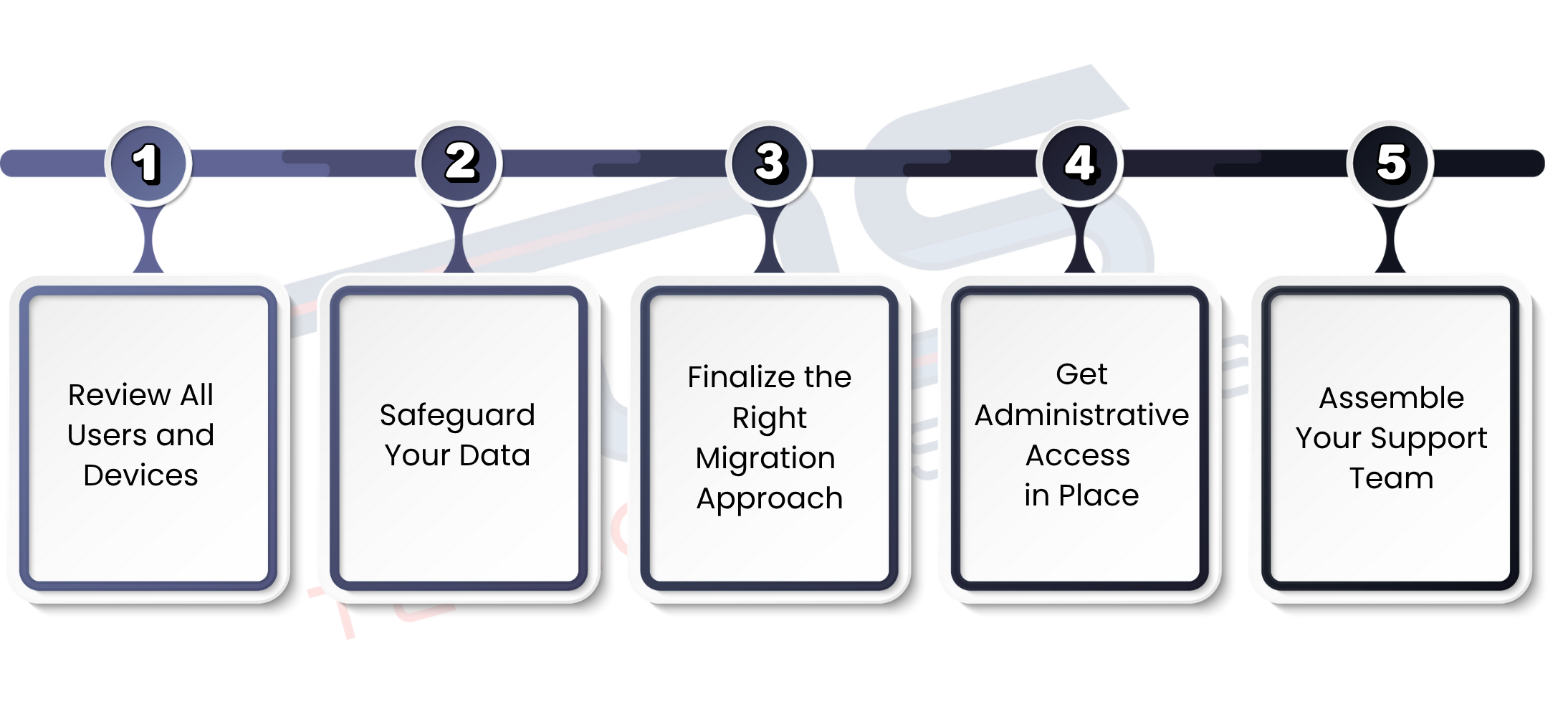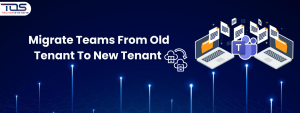Many Australian businesses are adopting cloud based tools to improve flexibility, reduce costs and support remote teams. A common starting point in this journey is Office 365 migration.
If you are wondering what is office 365 migration, it simply means moving your organization’s data, email, contacts, calendars and files to Microsoft’s cloud platform. This shift helps improve collaboration, boost security and simplify IT operations.
In this guide, we explain how the migration process works, what challenges to expect and how to make the most of your Office 365 investment. Whether you run a small business or manage IT for a growing company, this information will help you plan your next steps with confidence.
Need help with your Office 365 migration?
Get expert support from TECHOM Systems. Contact us today for a tailored migration strategy that fits your business.
Why Businesses Choose Office 365 Migration?
For many Australian organizations, working in the cloud has become essential. Whether managing a remote workforce or improving daily operations, moving to a secure and flexible platform like Microsoft 365 is a smart decision.
Understanding what is office 365 migration helps businesses realize how powerful this transition can be. By shifting data, emails and applications to the cloud, companies gain better performance, improved security and access from anywhere. Here are a few key reasons businesses choose Office 365 migration:
- Improved accessibility across locations, devices and teams
- Built in compliance and security tools to meet business requirements
- Smooth integration with apps like Teams, Outlook and SharePoint
- Automatic updates and cloud backups, reducing manual work
- Lower hardware and infrastructure costs with reduced on premises reliance
Office 365 is especially helpful for small to mid sized enterprises in Australia that want scalable solutions for hybrid or remote environments.
Common Office 365 Problems That Migration Solves

Many businesses in Australia rely on outdated systems that make daily operations harder than they need to be. As teams grow and work becomes more mobile, old setups often fail to keep up with modern demands. Understanding what is office 365 migration helps organizations see how moving to the cloud can solve key challenges.
Before starting migration, it is important to recognize the common Office 365 problems that many companies face:
- Outdated email servers and slow syncing
Legacy email systems often struggle with delays, poor connectivity and lack of support. This affects how quickly teams can communicate and share updates. - Manual backups and limited recovery options
Old systems require IT staff to handle backups manually, increasing the risk of data loss during a hardware failure or system crash. - Limited storage and file sharing tools
Many businesses deal with small mailboxes and unreliable file sharing methods. This slows down collaboration, especially for remote or hybrid teams. - High maintenance costs and IT workload
Maintaining legacy systems comes with high costs and technical limitations. IT teams spend more time fixing problems than focusing on growth or innovation.
Migrating to Office 365 solves these issues by providing a modern, cloud based platform with built in security, scalable storage and reliable performance. For many businesses, solving these problems is the first major benefit of switching to the cloud.
Types Of Office 365 Migration
Every business has a unique IT setup, so there is no one size fits all solution. Microsoft provides several Office 365 migration types to match the needs of different environments. Understanding what is office 365 migration also means knowing which method suits your business best. Let’s explore the most common types of Office 365 migration:
- Cutover Migration
This method is best for small businesses moving everything at once. All mailboxes, contacts and calendars are transferred in a single batch. It is simple but works well when there are fewer users. - Staged Migration
Ideal for medium sized businesses that want to move mailboxes in phases. It reduces downtime and allows IT teams to handle the process in manageable steps. - Hybrid Migration
Designed for large enterprises that want to keep part of their data on premises while shifting the rest to the cloud. It provides flexibility and is suitable for long term transition plans. - IMAP Migration
Useful for moving emails from platforms like Gmail or any other IMAP supported service. However, it only transfers emails, not contacts or calendars.
Choosing the right method depends on your current infrastructure, the number of users and how quickly you want the migration to happen. For the best results, businesses often consult with experts to avoid issues and ensure a smooth transition.
Step By Step Office 365 Migration Process
Once you understand what is office 365 migration, the next step is to plan the process correctly. A well executed migration ensures minimal disruption and smooth onboarding for your team. Whether you are upgrading from outdated systems or just improving your cloud strategy, following a clear process is key. Below is an overview of the typical Office 365 migration steps:
1. Pre Migration Assessment
Begin by auditing your current IT infrastructure. This includes:
Identifying existing email servers, file systems and collaboration tools
Noting user count, licenses and access permissions
Reviewing security configurations and potential data vulnerabilities
This step sets the foundation for a smooth migration by uncovering gaps and risks in your current setup.
2. Strategic Planning
Based on your audit, decide:
The appropriate Office 365 migration type (Cutover, Staged, Hybrid, or IMAP)
A clear migration timeline with phases
Team responsibilities and communication plan
Proper planning reduces surprises and ensures that technical teams and end users stay aligned.
3. Licensing and Office 365 Plan Selection
Choose the right Office 365 plans for your users. Depending on your needs, this may include:
Microsoft 365 Business Basic (for email and Teams)
Business Standard or Premium (for full desktop apps and enhanced security)
Accurate licensing prevents future limitations and avoids overspending.
4. Data Backup and Validation
Back up all critical data before the migration begins, including:
Emails, contacts and calendars
SharePoint files or file server content
Permissions and user configurations
This step ensures business continuity in case anything goes wrong during the transfer.
5. Migration Execution
Use secure tools or Microsoft’s native options to:
Move documents, shared drives and user settings
Transition groups, aliases and distribution lists
Execution may be done in batches or all at once, depending on your chosen migration strategy.
6. System Testing and Validation
After migration:
Verify that all user mailboxes, files and settings have been successfully transferred
Confirm login functionality and app access
Test shared drives, Teams channels and Outlook sync
This phase is critical to ensure nothing is missing or misconfigured.
7. Go Live Launch
Once testing is complete, fully transition users to the new platform. Ensure all DNS records are updated and users are notified. A soft launch or phased rollout can help reduce disruptions.
8. Post Migration Support and Optimization
After the go live:
Offer support for login issues, app usage and data access
Monitor usage and security reports
Provide training on Microsoft Teams, OneDrive for business migration and other tools
Fine tune policies and configurations
Disclaimer: This is a general overview of the process. At TECHOM Systems, we offer tailored Office 365 migration support, including custom planning, automation setup and post migration guidance based on your business needs.
Ready to Migrate With Confidence? Let TECHOM Systems handle the heavy lifting of your Office 365 migration process. From planning to post launch support, our experts ensure a smooth, secure and stress free transition.
Office 365 Migration Checklist For Australian SMEs
 Understanding what is office 365 migration is only the beginning. Before making the shift, small to mid sized businesses must be fully prepared to avoid disruptions. A well prepared business reduces risks and ensures a successful transition. Here is how to get ready:
Understanding what is office 365 migration is only the beginning. Before making the shift, small to mid sized businesses must be fully prepared to avoid disruptions. A well prepared business reduces risks and ensures a successful transition. Here is how to get ready:
1. Review All Users and Devices
Start with a full inventory. Know how many users you are moving and which devices they work on. This will help you map out the technical workload.
2. Safeguard Your Data
Create secure backups of your email accounts, files, calendars and contacts. This step gives peace of mind before any changes begin.
3. Finalize the Right Migration Approach
Whether you choose a cutover or hybrid method, your Office 365 migration type should match your business needs. Choose based on the size and complexity of your environment.
4. Get Administrative Access in Place
Both your current system and the new Office 365 setup must be fully accessible. Without admin rights, migration cannot begin.
5. Assemble Your Support Team
Have IT experts or a reliable partner like TECHOM Systems ready for testing, troubleshooting and user onboarding.
Using this Office 365 migration checklist as a guide helps your Australian business stay on track from start to finish. It prepares you to handle the technical side while focusing on what matters most about business continuity.
Comparing Office 365 Plans Before Migrating
Before understanding what is Office 365 migration in depth, it is important to know that choosing the right Office 365 plan plays a major role in the success of your migration. Each business has unique needs and Microsoft offers different plans to suit those needs. Picking the wrong one can either limit your access to essential features or lead to unnecessary costs.
Let’s explore the key plans available for Australian businesses and what makes them different:
1. Microsoft 365 Business Basic
This plan is a good starting point for small teams focused mainly on communication and file sharing. It is cloud based and includes essential collaboration tools, making it budget friendly.
What’s included:
- Web and mobile versions of Word, Excel and PowerPoint
- 50 GB mailbox via Outlook
- Microsoft Teams for communication
- OneDrive with 1 TB storage per user
Who should choose it:
Startups or small service providers who do not need desktop apps but want basic collaboration tools for remote work or client interaction.
2. Microsoft 365 Business Standard
This plan is designed for teams that need both online services and the desktop version of Office apps. It is ideal for businesses that rely on day to day document creation and advanced collaboration.
What’s included:
- All features of Business Basic
- Desktop versions of Office apps (Word, Excel, PowerPoint, Outlook)
- Booking and other productivity tools
- Email hosting and file storage
Who should choose it:
SMEs that require full featured productivity tools, document editing and more advanced team management tools across different locations.
3. Microsoft 365 Business Premium
This is the most feature rich plan among the standard options. It includes everything in Business Standard, along with enhanced security and device management features using Microsoft Intune.
What’s included:
- All apps and services in Business Standard
- Microsoft Intune for mobile device and app management
- Microsoft Defender for business class security
- Advanced cyberthreat protection and compliance tools
Who should choose it:
Businesses handling sensitive data or working in regulated sectors like finance, healthcare or education. Also suitable for those managing remote or hybrid teams needing tighter control over devices.
What Our Clients Say
1. Seamless Office 365 Migration for a Growing Team
💬 Case Study:
“We were running outdated email servers and facing constant sync issues. TECHOM Systems helped us migrate to Office 365 without a hitch. The team explained everything clearly and managed the transition with zero downtime.”
— Operations Manager
2. Hassle Free Cloud Move With Expert Support
💬 Case Study:
“Our Office 365 migration was long overdue, but we didn’t know where to start. The TECHOM Systems team handled everything from planning to data transfer. They even helped us choose the right plan. Highly recommended.”
— Business Owner, Retail Chain in Brisbane
3. Data Secure and Fully Compliant
💬 Case Study:
“We operate in a regulated sector and needed to ensure our Office 365 migration met all compliance requirements. TECHOM Systems provided a detailed roadmap, helped with security settings and delivered post migration support that exceeded expectations”
— IT Administrator, Healthcare Company in Sydney
Choose TECHOM Systems For Office 365 Migration Services
When it comes to a smooth transition to the cloud, businesses across Australia rely on trusted expertise. At TECHOM Systems, we specialize in delivering Microsoft office 365 migration services that are tailored to your specific goals and infrastructure. Whether you are upgrading outdated systems or expanding to support remote teams, our approach ensures a secure and efficient migration from start to finish. Here is how TECHOM Systems supports your Office 365 migration journey:
- Expertise You Can Trust
Our certified professionals ensure a smooth Office 365 migration with complete planning and dedicated support for businesses across Australia. - Office 365 Migration Strategy
From integration to compatibility, our Microsoft office 365 migration services are built to deliver value with a clear roadmap and minimal downtime. - Data Security and Compliance
We implement compliance driven strategies aligned with Australian standards to keep your business data safe throughout the migration process. - Migration Planning
Our team creates a custom strategy for your business environment, ensuring a seamless transition with no surprises. - Account Setup
We set up user accounts, licenses and configurations to make sure every detail is managed securely and efficiently. - Data Migration
Whether you are moving from on premises or hosted platforms, TECHOM Systems ensures accurate, complete and secure data transfer using best in class infrastructure.
Frequently Asked Questions
#1: What Are The Benefits Of O365 Migration?
O365 migration boosts productivity, enables remote access, improves collaboration and strengthens data security with automatic updates and backups. It streamlines your IT and lowers infrastructure costs for growing businesses.
#2: How Much Does It Cost To Migrate To Microsoft 365?
The cost to migrate to Microsoft 365 depends on user count, data volume and support level. TECHOM Systems offers tailored pricing based on your business needs and migration complexity.
#3: How Long Does It Take To Migrate To Office 365?
Most Office 365 migrations take between a few days to a few weeks. Timeline depends on email volume, system complexity and the chosen migration type.
#4: What Is Microsoft Migration?
Microsoft migration is the process of moving email, data and applications to Microsoft 365 cloud. It includes setup, planning and transferring files securely.
Conclusion
In this blog, you explored what is Office 365 migration and how it supports growing businesses in Australia. We discussed the different migration types, common issues it solves, the benefits of switching and a checklist to guide your transition. You also learned how to compare Office 365 plans based on features and user needs.
If your business is ready to improve security, collaboration and remote access, Office 365 migration is a smart step forward. TECHOM Systems provides expert led Microsoft Office 365 migration services to make your move seamless from start to finish.
Have Questions About Migrating Your Business To Office 365?
Contact TECHOM Systems today and speak with our certified consultants.

Technical Specialist with 10+ years of experience in IT solutions, data engineering and AI-driven automation. At TECHOM Systems, she focuses on delivering secure, scalable and business aligned technology strategies. She applies advanced technical skills to develop scalable solutions and integrate emerging technologies for optimized digital workflows.






